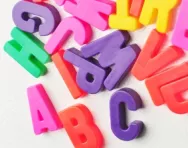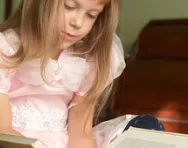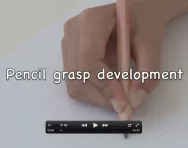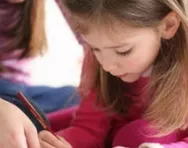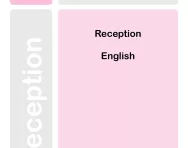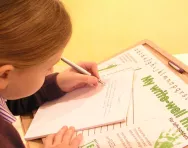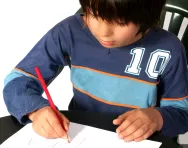Early years writing
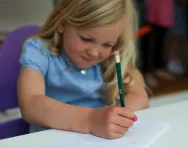
When your child is only just getting to grips with the letters in their own name, the idea of them learning to write and beginning to do some creative writing might seem far-fetched. But in Nursery and Reception, writing is just one of the skills that children are expected to develop. And while they may not be penning the next Harry Potter yet, their writing will come on in leaps and bounds over their Reception year.
So how are tiny four- and five-year-olds taught to write, and how can you help your child develop this essential skill?
Writing and the curriculum
The Early Years Foundation Stage (EYFS) framework sets literacy as one of the seven areas of learning for children, and this includes beginning to write. It says, ‘literacy development involves encouraging children to link sounds and letters and to begin to read and write.’


Start the Reception Learning Programme!
- Weekly maths & English worksheets direct to your inbox
- Follows the National Curriculum
- Keeps your child's learning on track
Children aren’t formally assessed on their writing in the EYFS, but will have an observation-based assessment near the end of their Reception year.
How children are taught to write
Children learn to write in the EYFS through a combination of adult-directed activities and child-initiated play. For example, they might play at going shopping and ‘write’ their own shopping list.
Alongside play, teachers will encourage children to begin to write through more formal activities. For example, they might draw a picture of a flower and be asked to label the parts or write their own version of a well-known story like Goldilocks.
Talking is the basis for all writing in the EYFS. ‘Children don’t have the skills to write anything down, so what they say is a precursor to their writing,’ explains Pie Corbett, co-author of Talk for Writing in the Early Years (£29.99, Open University Press/McGraw-Hill Education). ‘You can’t write a sentence unless you can say it.’
Learning to write also involves all the senses. ‘For instance, if the children are learning about The Gingerbread Man, not only will we read it over and over again, but we’ll act it out, get the children to join in with reciting it, and use story maps with pictures of what happens to act as a visual reminder,’ Pie says. ‘Using the senses helps the story to become deeply embedded in children’s minds, and adds to their store of language and sentence patterns.’
Learning to write is a gradual process. ‘At first, children’s writing is just mark-making, but as time passes and they begin to learn the alphabet, they’ll begin to make letter shapes, often starting with the letters in their name. Through adult-directed activities, they will also pick up conventions like moving from left to right on the page, and from top to bottom.’
As children begin to learn about phonics, their writing enters a new phase where they start to write letters. At first, they tend to just write down the most obvious sounds in a word – so, for instance, ‘cat’ might be ‘c t’ – but as their phonics learning progresses, they’ll write with more accuracy.
‘By the end of Reception, most children will be writing independently, and writing clearly enough that you can read what they’ve written,’ says Pie.
Helping your child learn to write
There are many things you can do at home to help your child learn to write. Probably the most important is to read to them as much as you can. ‘We know that about 70 per cent of children’s vocabulary comes out of reading,’ says Pie. ‘Every time you read with your child, you’re building a story toolkit for writing. You're feeding the mind with characters, settings and possibilities, as well as the language they need to write.’
It’s also important to let your child see you writing, and involve them in it. For example, you could sit down together and write a birthday card for Grandma, or a message for Daddy saying you’ve gone to the shops. ‘Children won’t want to pretend to write unless they see adults writing,’ Pie says.
As your child becomes more interested in writing, you can engage them in more structured activities. ‘If you go on holiday, for example, your child could make a scrapbook, and you could write down what they say about the things they stick in,’ Pie suggests. ‘Let them illustrate the events, and write down their thoughts and captions for them.’
You can also help them develop their story-telling abilities, even if they can’t yet write their ideas down, by getting your child to tell you a story and writing it down for them.
Whatever you do, remember that learning to write takes time. If your child writes something that you simply can’t read, don’t try to correct them, but say, ‘That’s a lovely piece of writing – you tell me what it says, and I’ll write it down too.’
‘Being resilient and not giving up is one of the key factors in succeeding at school, and by praising your child’s effort, rather than the standard of their writing, you’ll encourage them to keep persevering with this new skill,’ Pie says.

Give your child a headstart
- FREE articles & expert information
- FREE resources & activities
- FREE homework help
